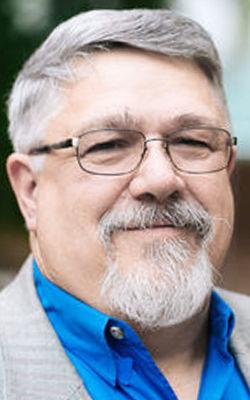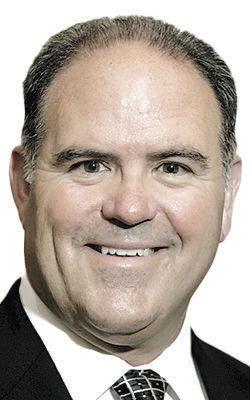fight bias in police relations with youth
JANESVILLE
Ferguson. Baltimore. Chicago. Madison.
The list of tragic encounters between police and juveniles or young adults of color goes on and on. It inflames people on all sides. They wince every time they see the latest headline: Again? Why?
The toughest question might be, how can we fix this?
Janesville might seem an unlikely place to address this question, but Janesville will be part of a national effort to try solutions developed by a police-and-youth-oriented organization in recent years.
The Police Training Institute, a unit of the Council for a Strong America, has already visited Rock County and about 60 youths here to find out what they think about police. Representatives also met with police staff and rode in patrol cars.
Another meeting to learn more from the community is set for Tuesday, June 18.
John Shanks, the institute’s director, said a panel of police and youths will start “an open, honest discussion about the police and how we can do better. The police need to hear from the community, and the community also needs to hear from police.”
 John Shanks
John Shanks
Then on June 20 and 21, law enforcement from around Rock County and from Madison will undergo training designed to prevent the worst from happening.
Employees at the institute developed the training with help from social scientists and psychologists and refined it with the help of an education expert. They tweaked their approach in recent years as they took it to cities around the country, Shanks said.
And they conducted evaluations 90 to 100 days later to find out whether police remembered and used what they had been taught.
It is making a difference, Shanks said.
The number of police-youth interactions did not change, Shanks said, but the use of force declined. And the number of arrests declined.
Officers who went through the training said it changed them, and they said more officers should be exposed to it, he said.
An officer in Austin, Texas, wrote to the institute, saying he was called to a home to handle a runaway who had returned and was causing a disturbance.
Before the training, he would have told the kid to calm down and behave, the officer wrote, Shanks said. But this time, he talked and listened, and he discovered the youth was not the problem. She was the victim, said Shanks, who would not offer details.
Youth rely on social media and movies to learn about police, and what they learn is often negative, Shanks said. Officers have no tools to deal with that.
“It’s a recipe for disaster, so we try to turn the tables to provide tools to police and raise awareness and provide tools to the youth,” he said.
The training’s main focus is on four things police need to know when dealing with youth, Shanks said:
Adolescent brain development: This new area of science suggests brains are not fully developed until age 25, so when police see what appears to be a case of a bad kid acting out on the street, it might be a case of a young person not thinking rationally.
Deescalation: Officers have been taught how to keep a bad situation from getting worse, but techniques for calming someone are different when youths are involved.
“Our teens and young adults want to be shown respect; they want conversation and to receive information in an adult manner,” Shanks said. “We want to make sure law enforcement and youth have a good dialogue. … Our motto in the program is, everyone goes home.”
That means they go home safely, not ending up in a hospital or jail.
Bias: Police have heard about implicit bias, but they’ve often been taught by people who have no police experience. The institute’s trainers all are ex-cops who show the officers that everyone is biased, but the question is what they do about it.
One part of the bias training is how to write nonbiased police reports. Shanks said a report might say the suspect, who happens to be black, brandished a weapon threateningly, perhaps because the officer felt threatened. But if the person is white and did the same thing, the description might be that he was just holding a knife.
That loaded language will unfairly follow the suspect as prosecutors write criminal complaints and prison and probation officials copy those words into their reports, which will affect a person’s life, Shanks said.
Shanks said his team found no evidence of that here: “We were very impressed with Janesville.”
Informed response to trauma: Youths might have been bullied in school, seen gang violence or lost friends. Some suffer from violence in the home. The result can be post-traumatic stress, and it’s important for an officer to recognize that.
Police are not psychologists, but if a traumatized youth is acting out, is withdrawn or is self-mutilating, knowing about trauma helps officers handle the situation.
The training includes youth from the community who do role-playing with the officers, which gives the youth tools to use when interacting with police, Shanks said.
The role-playing evolves through the training so that at the end, youths are playing cops and cops play youths. That develops empathy, Shanks said.
The training is grant-funded and comes at no cost to local governments, Janesville Police Chief Dave Moore said.
 Dave Moore
Dave Moore
Moore has been involved with the organization for about 15 years and believes in its research-based approach to policing, so he invited Shanks’ group, he said.
Moore sees no dire problem here.
“My interest in this type of program is always to build trust in the community, build trust with our youth, and we’re looking at preventive strategies rather than waiting for something bad to happen and having to react,” Moore said.
Shanks said Janesville is on the Interstate between Chicago and Madison. “Even though Janesville does not have those (negative) interactions, it doesn’t mean officers shouldn’t have tools,” he said.
Janesville is about the 15th city to receive this training, Shanks said. The institute wants to raise money to expand the number of trainers to get the program out to many more police nationwide.
Next up for the trainers are the counties around Natchez, Mississippi; Albuquerque, New Mexico; Tampa, Florida; and they’re working to go to Washington, D.C.
